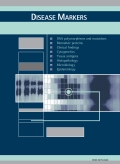Authors: Hielscher, A.H. | Bluestone, A.Y. | Abdoulaev, G.S. | Klose, A.D. | Lasker, J. | Stewart, M. | Netz, U. | Beuthan, J.
Article Type:
Research Article
Abstract:
Diffuse optical tomography (DOT) is emerging as a viable new biomedical imaging modality. Using near-infrared (NIR) light, this technique probes absorption as well as scattering properties of biological tissues. First commercial instruments are now available that allow users to obtain cross-sectional and volumetric views of various body parts. Currently, the main applications are brain, breast, limb, joint, and fluorescence/bioluminescence imaging. Although the spatial resolution is limited when compared with other imaging modalities,
…such as magnetic resonance imaging (MRI) or X-ray computerized tomography (CT), DOT provides access to a variety of physiological parameters that otherwise are not accessible, including sub-second imaging of hemodynamics and other fast-changing processes. Furthermore, DOT can be realized in compact, portable instrumentation that allows for bedside monitoring at relatively low cost. In this paper, we present an overview of current state-of-the -art technology, including hardware and image-reconstruction algorithms, and focus on applications in brain and joint imaging. In addition, we present recent results of work on optical tomographic imaging in small animals.
Show more
Keywords: tomography, instrumentation, image reconstruction, scattering media, brain and joint imaging
Citation: Disease Markers,
vol. 18, no. 5-6, pp. 313-337, 2002
Price: EUR 27.50





